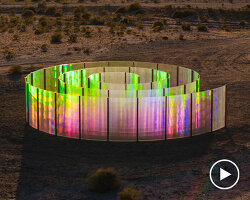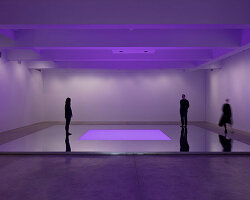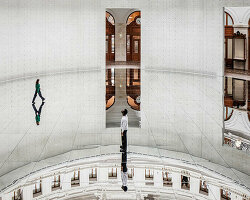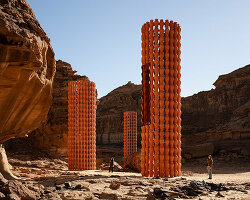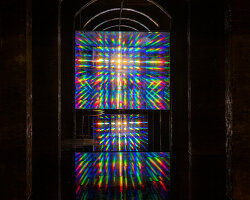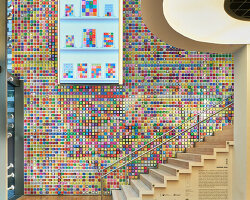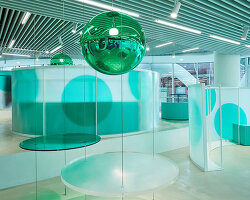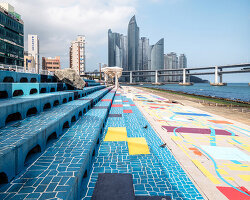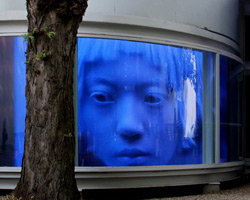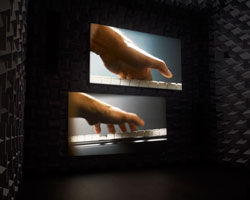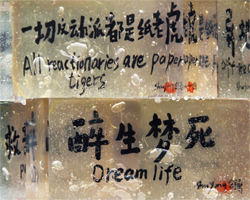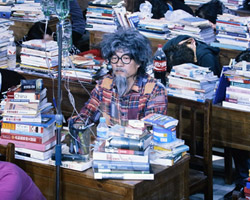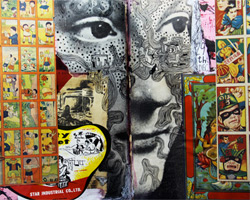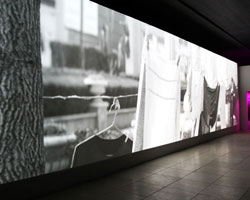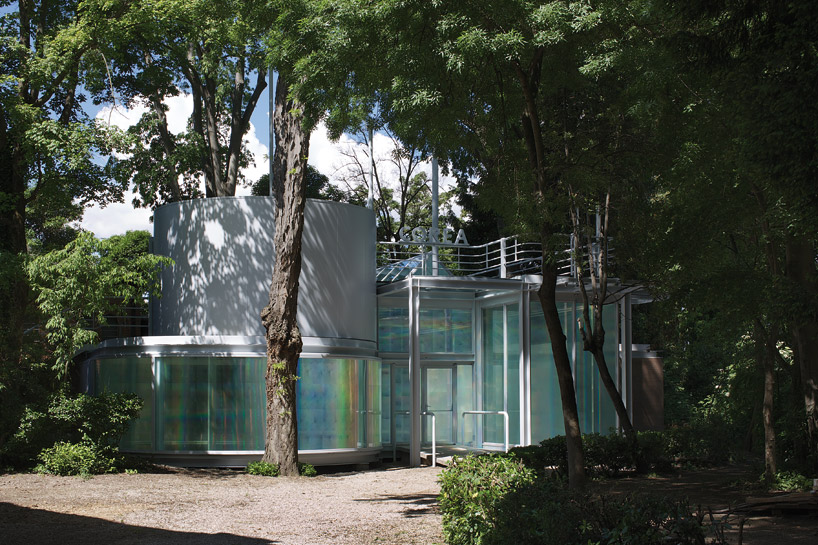
seungduk kim didn’t approach her role as curator of the korean pavilion at the 2013 venice art biennale in the traditional sense. rather than hosting the work of a korean artist, kim wanted to make the architecture of the space, designed by seok chul kim and franco mancuso, the focus of the exhibition. she invited kimsooja to transform the venue into a place of transcendental experience. dealing with issues relating to the body, self and others, and the relationship of ‘yin’ and ‘yan’ to life and death–in particular through the notion of the ‘bottari’ (which means ‘bundle’ in korean) in relation to the concept of sewing–the new york-based artist has extended her studies to conceive ‘to breath: bottari’.
kimsooja has wrapped the entirety of the national pavilion’s interior with a translucent film, dividing the built environment from nature. the skin diffracts the daylight, showering the internal structure with spectrums of light, the intensity of the rainbows of color reflected onto the walls and floor. this metamorphosis is in direct correspondence to the movement of the sun rising and setting across the building, respiring to the natural fluctuations of the sun. making it a ‘breathing bottari’, her piece ‘the weaving factory’ (2004-2013) fills the volume with the sound of the artist inhaling and exhaling, bringing it to life.
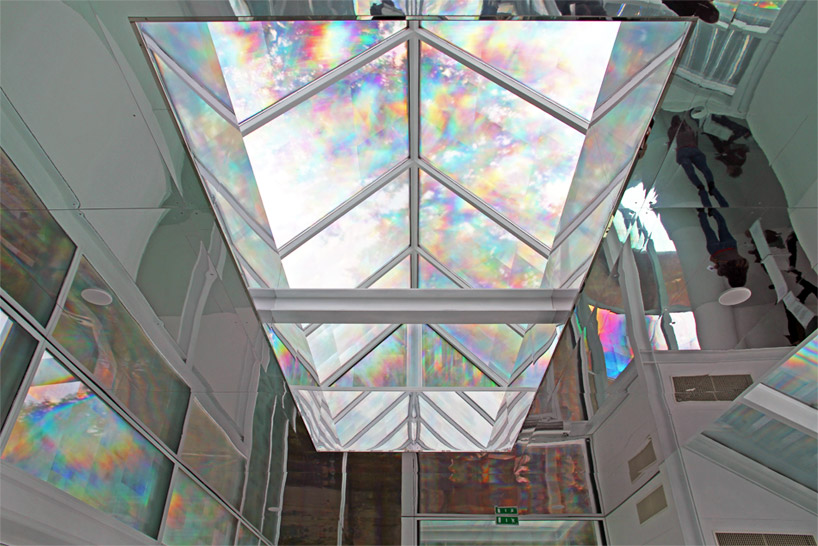
‘to breathe: bottari’, mixed media installation, diffraction grating film, aluminum mirror panels
image © designboom
‘to breathe: bottari’ celebrates the dual existence of sound and soundlessness and the reality of darkness as an extension of light and light as a part of darkness. questioning the hierarchy of visual knowledge over the ‘unseen’, in the breathing bottari opposite poles are treated as part of the same whole. the artist wishes to invite the audiences to contemplate a special moment and sensation of their body experiencing an awareness of the conditions of human knowledge and ignorance and its psychology in space and time. this is the ‘notion of totality’ that she has been pursuing in her practice until now, as a way to question the conditions of civilization in this era.
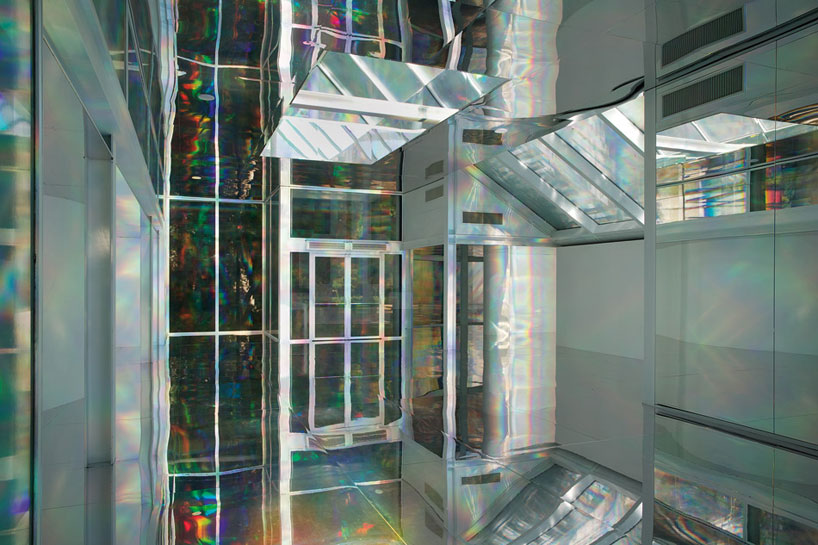
the interior is wrapped in a thin film which diffracts the sunlight
photo by thierry depagne, © kimsooja studio (also first image)
the aspects of light and sound are further heightened by ‘to breath: blackout’ (2013), an anechoic chamber, cast in complete darkness, devoid of sound except for that of the viewer’s own body; a soundless dark vacuum of infinite reflection of self: a black hole. kimsooja invites the audience to become a performer in her living bottari; to experience a personal sensation and awareness that reveals the extremes of light and darkness, sound and soundlessness, the known and unknown in her physical and psychological sanctuary that questions our physical condition.
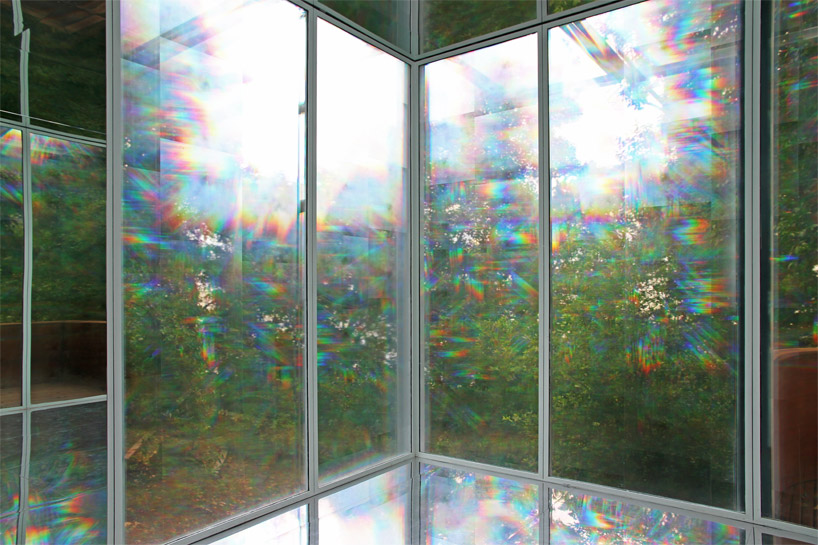
the interior is showered with a colorful spectrum of light
image © designboom
diffracting/reflecting
light is driven from surface to surface and is multiplied in its diffracted state. the rainbow like infinity mirror acts as a kaleidoscope on an adult scale. in korea — red, yellow, blue, white and black — these five colors are closely related to the five cardinal directions.
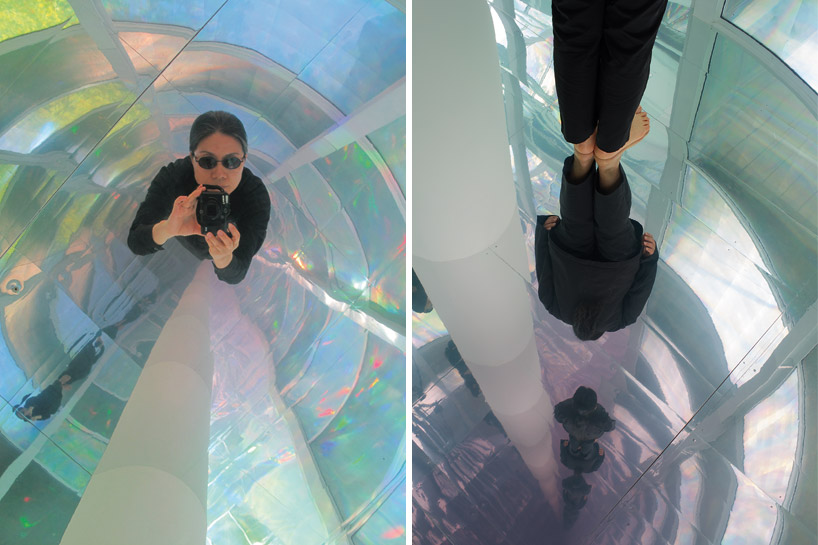
left: self portrait by kimsooja, © kimsooja studio
right: portrait of the artist by thierry depagne, © kimsooja studio
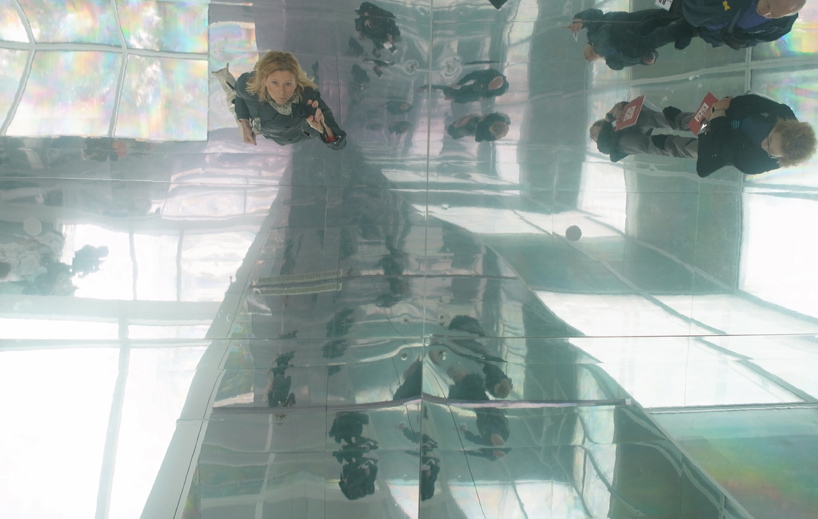
designboom plays with the reflections inside the pavilion
image © designboom
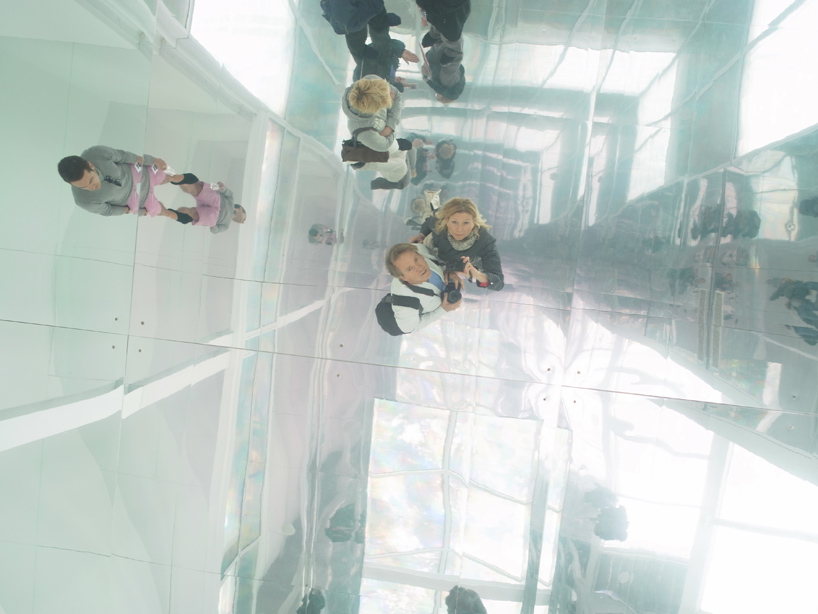
reflections on ceiling and floor
image © designboom
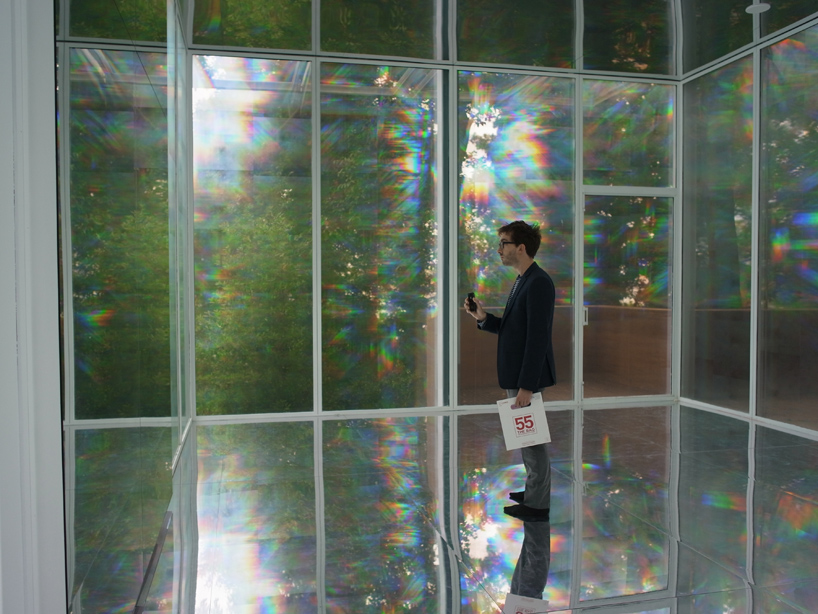
many visitors photograph themselves within the pavilion
image © designboom
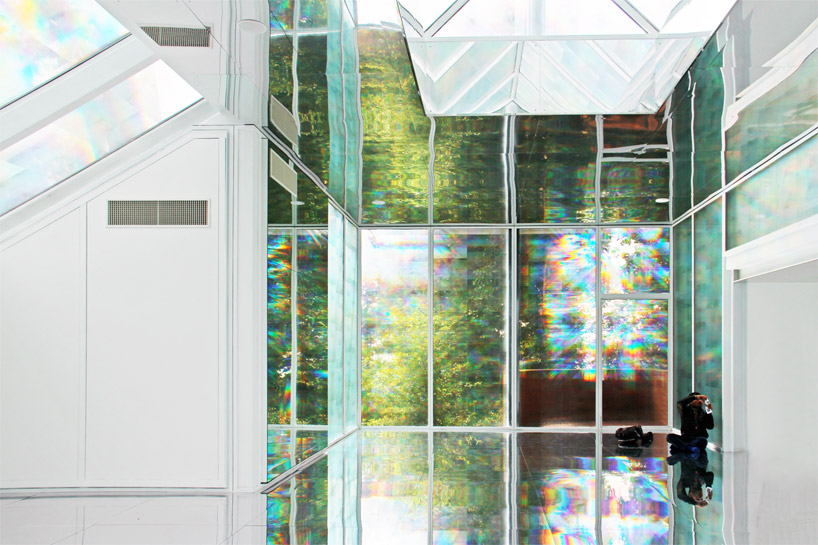
kimsooja’s ‘to breath: bottari’ is a physical and psychological sanctuary
image © designboom
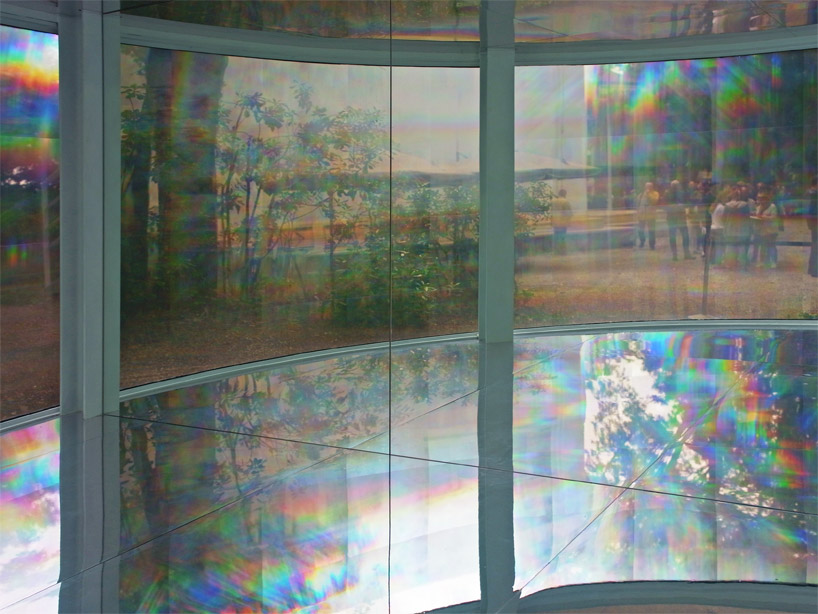
the semi-circular space at the front of the building is reshaped into an infinite cylindrical room
image © designboom
kimsooja composed the pavilion as a succession of ambient artworks: the main space hosts the diffractions of light in endless reflecting effects through the mirrored floor and ceiling; the semi-circular space at the front of the building is reshaped into an infinite cylindrical room. there is no composition, as she created the conditions with the materials (films, mirrors) and submitted to randomness (sunny or cloudy days) and the intensity of effects. it is not the viewer who completes the painting, but the weather in its uncertainty.
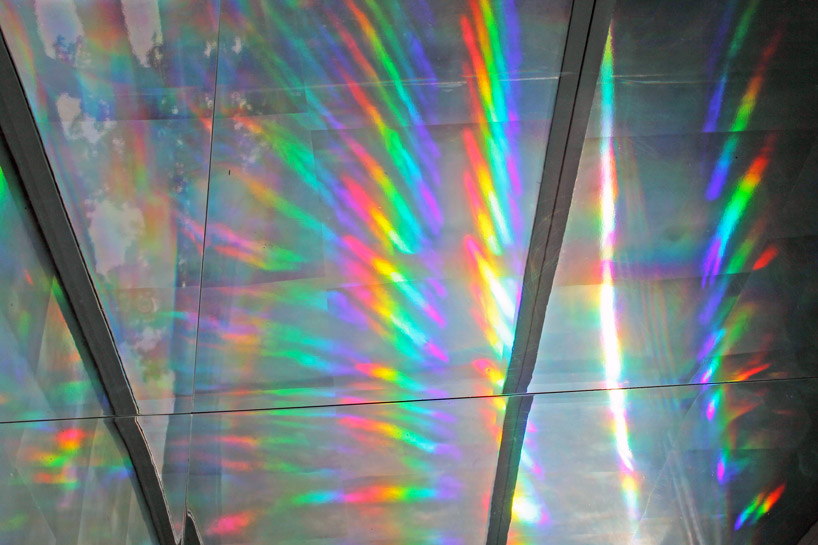
resulting spectrum of color
image © designboom
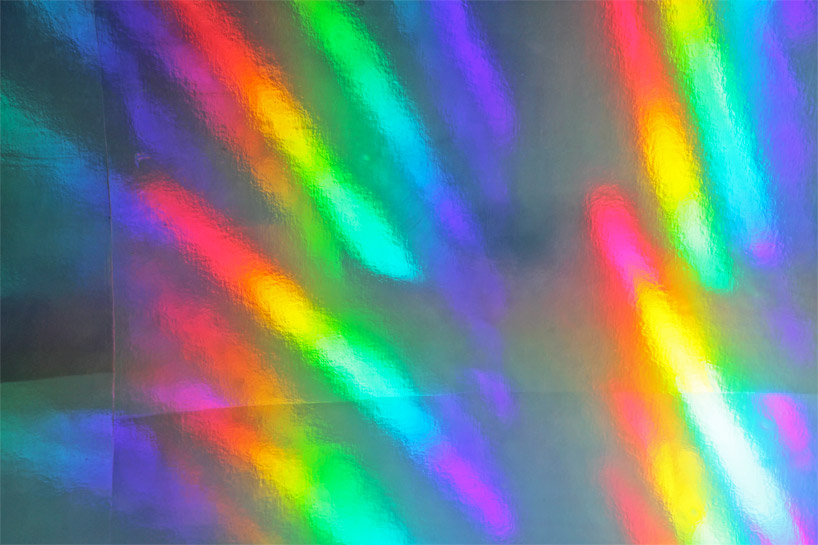
image © designboom

image © designboom
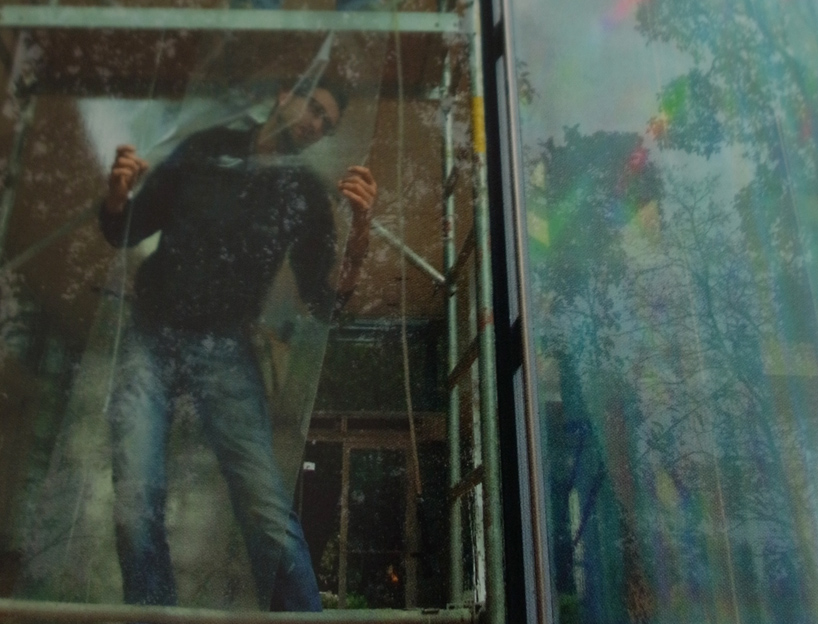
the film divides the interior from the exterior environment with a translucent wall of color
reflections are like echoes, filling up the main space of the pavilion. to counter, oppose, distort and reverse, the artist has transformed the brick room at the flank of the building into an anechoic chamber. this idea apparently negates the rest of the show. is it really the opposite or just the reflectivity driven to the far extreme where everything disappears into non-existence?
‘in the anechoic chamber, which refers to the blackout experience in new york last november — she completely blocked out both sound and light waves so that the audience has no sense of space, distance or orientation. this environment refuses knowledge of the other, by putting the audience in a position of complete ignorance in terms of visual knowledge. darkness amplifies our fears, insecurities and fantasies of the ‘unknown’ or ‘unseen’; which is the origin of human ignorance.‘ kimsooja.
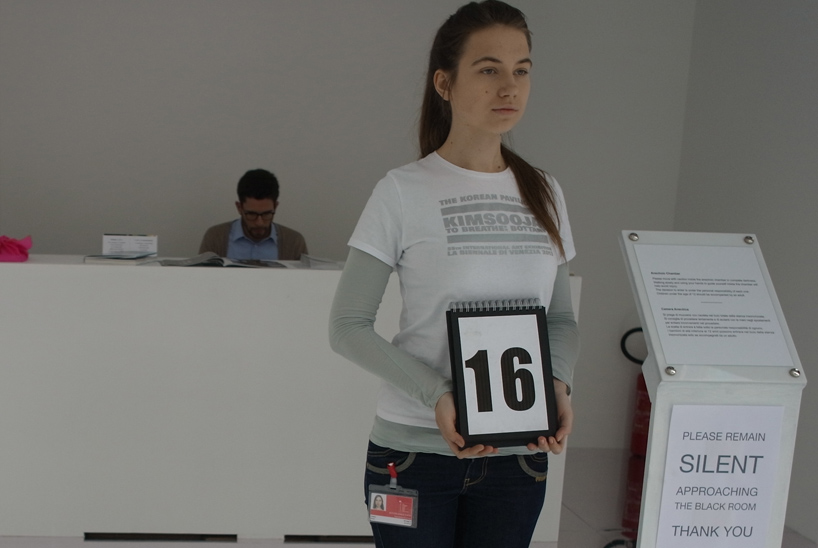
visitors took of their shoes and went one by one into a sensory deprivation chamber
image © designboom
after the infinite rainbow spectrum experience in the ‘breathing pavilion’ with parallel mirror surfaces, visitors were invited to have a silent rest inside the complete darkness of the anechoic chamber.













the 2013 korean pavilion has been organized by arko arts council korea, commissioned and curated by seungduk kim, with deputy commissioner kyungyun ho.
kimsooja’s ‘to breath: bottari’ is sponsored by nexon corporation, with support from samsun foundation of culture, samsung electronics, and jain song. supporting galleries include: kukje gallery, seoul; galleria raffaella cortese, milano; kewenig gallerie, berlin and majorca; la fabrica, madrid; galerie tshdi, zuoz.
kimsooja
born in korea (1957), lives in new york, paris & seoul.
kimsooja is an internationally acclaimed conceptual multi-media artist. addressing issues of the displaced self and others; the artist’s work combines performance, video, photo and site-specific installation using sound, light and specific korean bedcovers. with the eyes of a mirror and a needle that reveals and brings us to an awareness of self, kimsooja investigates questions concerning the conditions of humanity, while engaging issues of aesthetics, culture, politics, and the environment we live in. kimsooja brings together a conceptual and a structural investigation of all art media through an exploration of materiality/ immateriality, mobility/immobility, by non-making and non-doing, that inverts the notion of the artist as the predominant actor. the artist takes us on her journey that evolves with the continuous unfolding of her concept of bottari (korean word meaning bundle) and the notions of needle and mirror. kimsooja’s work invites us to question our existence, the world, and the major challenges we are facing in this era.
